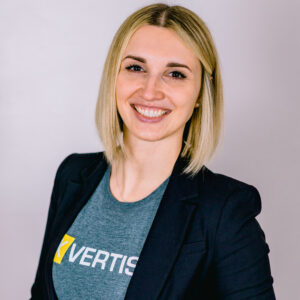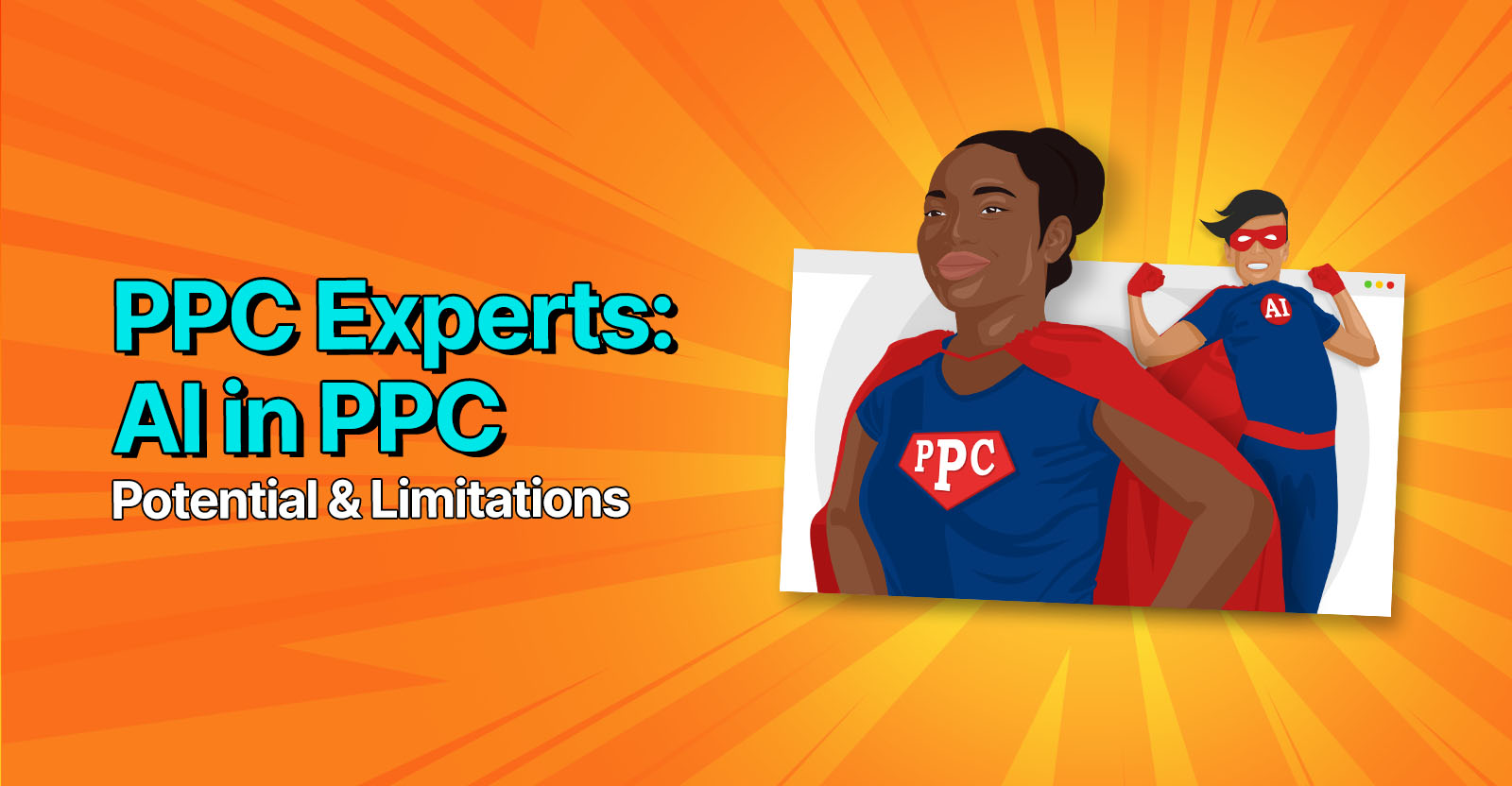This is an excerpt from SEJ’s PPC Trends 2024 ebook, our annual roundup of expert opinions on what you can expect over the course of the next 12 months.
This year, new AI features rolled out on PPC platforms, and marketers began adopting generative AI in earnest.
The dust is settling after the initial exuberance about AI, and we’re starting to see more nuanced and cautionary opinions develop.
In this section, you’ll see contributors highlighting the benefits of both AI-powered automated ad campaigns and adopting generative AI in your workflow.
You’ll also see cautionary words, reminding you that human thinking and creativity still drive online interactions.
If I had to summarize these insights in three sentences, they would be;
- AI is very good at the things it’s good at, and very bad at the things it’s bad at.
- AI is a square peg, so beware of round holes; AI is not a panacea.
- AI can be a multiplier of productivity and results, but some processes are worth the difficulty.
How AI Can Improve Social Media Advertising Performance
Akvile DeFazio, Founder, AKvertise

Artificial Intelligence (AI) is quickly becoming an integral part of the advertising industry, transforming how companies reach their target audience and how advertisers increase effectiveness and efficiency in managing ad accounts.
Here are some ways AI can help drive more results in 2024:
Targeting Improvements
Just a few short years ago, campaigns and ad sets were set up more granularly, but after iOS updates, Meta launched several new machine learning options that advertisers can leverage for better results and find their customers.
Now, in Meta Ads Manager, there are Advantage+ Audiences that leverage machine learning to help advertisers reach the most valuable audiences much faster.
By enabling this, you can also share an audience suggestion, such as recent purchasers, so then the system can prioritize people matching using this high-value audience profile before expanding the targeting net wider.
If you work in ecommerce, Meta’s Advantage+ shopping campaigns can help find new customers using its automatic placements, lowest-cost bid strategies, and more by serving the best ads to the people most likely to convert using its AI.
Creative Optimization
When it comes to creative optimization, particularly on platforms like Meta Ads, running dynamic ads with various creatives can be highly effective.
Platforms like Meta leverage AI to serve your target audience with the most relevant creative content, increasing the likelihood of achieving your campaign optimization goals.
By trusting the system to determine the best approach, you can expect improved and faster results compared to manual testing by humans.
In this past year, its performance has improved significantly, and I believe it will continue to do so.
Measuring Results
AI also offers extensive analytics and reporting capabilities, enabling advertisers to measure the success of their campaigns accurately.
With data-driven insights, advertisers can identify the most effective ads and targeting strategies, enabling them to make informed decisions for optimizing campaigns.
We use tools that allow us to import data, conduct trend analysis, create graphs, and obtain valuable insights.
By streamlining reporting and analysis, the right AI-powered tool serves as a time-saving asset that can guide optimization efforts and drive favorable outcomes.
This is only the start of the AI revolution transforming the social media advertising landscape. Brands can now connect and interact with their target audience in a more impactful manner and achieve their various goals.
Embracing AI experimentation can be worthwhile, as it elevates our human capabilities, increasing our efficiency, productivity, and effectiveness in our work.
If you haven’t already, add AI to your advertising stack to elevate your growth goals for 2024.
AI & Personalization In Marketing
Alex Macura, Founder/CEO, Your Digital Assembly

The world is a fast-paced place, and the marketing industry is even more so. It has to be, just to keep up.
Over the past 50 years, we’ve seen growth in digital marketing, social media and mobile marketing, television, and database marketing.
But what does the future and, more specifically, 2024 hold for the industry as a whole? Let’s take a look.
A Surge In AI Marketing
AI gives marketers the ability to analyze huge amounts of data in seconds, boosting efficiency and productivity.
Predictive analytics can help to predict consumer and purchase behavior, allowing for more tailored, targeted ad campaigns.
And it can learn over time, too, constantly evolving into a more competent version of itself. So, if you’ve resisted getting on board the AI train, it’s time to step up to the platform.
More Personalized Content
Another area AI excels in? Personalization – which is why, in 2024, hyper-personalization is set to become our new reality.
Customers want to feel seen, so any brand that takes the time to curate a buying experience specifically for them will gain traction.
Thanks to AI and advanced analytics, content can become more tailored than ever, strengthening brand relationships and boosting return on investment (ROI).
Finding The Balance Of Generative AI In Ads
Amy Hebdon, Founder + Managing Director, Paid Search Magic

There are many ways to use generative AI to enhance your campaigns – and only two ways to get it wrong:
- Blindly rely on it for everything.
- Refuse to use it for anything.
Generative AI is in its infancy and capable of making mistakes, so fully relying on it for 100% accuracy is a bad idea.
At the same time, avoiding it because it can’t completely replace you needlessly limits your ability to be more creative and productive.
Between those extremes are countless opportunities to improve and streamline your work. Use generative AI for discovery, challenging assumptions, brainstorming, iterating and refining ideas, editing, and strategy.
You don’t need costly subscriptions to get started, either. The free version of ChatGPT is a great entry point to meaningfully improve your work and workflow.
Standing Out In A Playing Field Leveled By AI
Andrea Atzori, Director, Ambire

Automation serves as a formidable ally in streamlining the mundane aspects of our operations, such as campaign build and reporting.
By harnessing automation, we not only expedite these processes significantly but also diminish the likelihood of human errors creeping in.
Nevertheless, it remains undeniable that the very innovations ushered in by AI and machine learning (ML), if not managed, also bear the capacity to homogenize content, often yielding results that hover around the realm of mediocrity or average at best.
Consequently, if we do not settle for average but instead strive for marketing excellence, this pursuit involves leveraging the full spectrum of available data and tools to our advantage.
Only by adopting this approach can we mitigate rising costs and consistently deliver outstanding outcomes.
Scale Isn’t Everything, Don’t Forget The Power Of Humans & Creativity
Ben Wood, Director of Growth & Innovation, Hallam

One trend we’ve been referencing for years is the growing impact of machine learning and automation on advertisers.
In 2023, we’ve seen a huge acceleration in technological innovation.
We’ve experienced the democratization of creative production via generative AI tools built into Google Ads and other networks, reducing cost and increasing the speed of production.
This has lowered the barrier to entry to platforms such as YouTube, and display formats for smaller advertisers with less budget to spend on assets.
We’ve also seen much-publicized advances in large language models (LLMs), enabling the development of scripts with limited programming capabilities, and offering huge economies of scale for campaign creation and PPC account expansion.
What we’ll start to see in 2024 are the second-order effects of generative AI. These are the less obvious ripple effects caused by AI over the longer term.
Despite the increase in our capabilities to create ads at scale using generative AI, this might not enhance performance but could hamper it:
- AI is already adept at creating ads at scale, such as automatically created ads and demand generation features in Performance Max.
- It’s easier than ever for advertisers to get started and enable more features due to automated creative capabilities. The lower barrier to entry could mean users see even more ads than they’re used to.
- Relying on automated creative may result in generic, feature-based ads.
- Buyers will learn to tune out these ads.
Increased Value On Human Perspectives And Creators
As consumers learn to tune out to the homogenous advertising enabled by generative AI, we’ll see an increased desire for human perspectives and creativity.
We’ve already seen Google start to surface creators and influencers via their “perspectives” feature with the introduction of Search Generative Experience, and I expect this to bleed through into the advertising landscape.
Partnering with consumer-facing creators and influencers as part of your paid media strategy will increase in importance in the year ahead to maximize your reach across Google’s evolving search landscape and beyond.
Back To Basics: Creative-First Advertising
Today, we have so many channels to manage that it’s easy for things to become disconnected. What holds it together? A creative idea.
If your campaigns lack a coherent, consistent creative concept, your campaigns will not perform.
Sometimes, we get so caught up in the platform choices we forget about the message we’re trying to get out through them.
With the advent of generative AI, I think creativity will be a key differentiating factor for successful campaigns. Starting with a strategy, then a creative concept should always come before media planning.
This serves as a golden thread – a compelling creative idea that ties all your marketing and advertising activities together and helps you stand out from the crowd.
AI-Powered Campaigns Deliver A Future Where Marketers Can Spend Less Time On Optimization
Corey Morris, President/CEO, Voltage

AI-generated content is not going away anytime soon and is inevitably making its way into AI-powered ad campaigns in 2024.
AI can craft descriptions, headlines, and ad copy tailored to your client’s campaign objectives, resulting in effective, personalized content.
This personalization is possible because AI can understand user behavior patterns and apply experimentation and winning results to campaigns in real time.
You can monitor and manage your client’s campaign performance in real-time, ensuring that your campaigns perform relative to your goals.
Performance Max Campaigns
Performance Max campaigns will now utilize machine learning and artificial intelligence technology more thoroughly in 2024.
Performance Max campaigns, following search campaigns, are subjectively one of the most effective ways to reach a broader audience and achieve a higher return on investment.
Google now offers the option to upgrade various campaigns, including dynamic search ads and display campaigns to Performance Max campaigns.
Some current benefits of transitioning to Performance Max campaigns include:
1. Increasing creative assets.
The benefit of Performance Max campaigns utilizing your creative assets allows search engines to properly convert your search ad to best fit the intended user base on their search queries.
Creative assets will now have more flexibility when changing any text in your ad copy.
2. Implementing inventory-based ads.
When your product data feed is connected to a Performance Max campaign, your ads will now function based on the inventory you have left in stock.
This can be a huge time-saving benefit because you won’t have to manually examine your product inventory amount.
The upgrades to Performance Max campaigns will ultimately lead to a higher usage rate with advertisers.
Automate Campaigns, Not Strategies: What Are You Doing & Why?
Tim Jensen, Sr. Search Marketing Specialist, M&T Bank

As PPC managers move forward in a world of increasingly automated, “done for you” campaigns, fully understanding the concerns and goals of your client/boss will help set you ahead.
This is not an excuse for not staying up-to-date with current ad platform functionality, but it’s too easy to drift into a “plug-and-play” mentality with the direction in which the PPC world is headed.
Setting up a conversion pixel is relatively easy these days (in many cases), but ask yourself why you are tracking that conversion, and how it ties into the business goals the company ultimately cares about.
Churning out 15 responsive search ad headlines is easier with AI, but will those stand out in the search engine results page (SERP) against creatively brainstormed headlines that speak to the heart of the customer’s needs?
Generating a list of keywords can be as simple as plugging a URL or a couple of seed phrases into Keyword Planner, but are those the most relevant terms that ideal customers are searching for?
On the positive side, increased automation in platforms has reduced the need for constant hands-on tweaking, such as in bid management. This frees up more time you can spend keeping the lines of communication open with the stakeholders you answer to.
Take some time in 2024 to think through how you can better understand stakeholder goals, and how to tie in your targeting, creative, and bidding approach to best meet those objectives.
Expect Less Campaign Control – Find Exciting New Ways To Spend Your Time
Lauren Weisel, Director of SEM, Media.Monks

One major theme of 2023 has been automation, and I expect this to continue well into 2024.
Google continues to roll out campaign types that are heavily automated and give less control to marketers, starting with Performance Max and, most recently, with the launch of Demand Gen.
As Performance Max has evolved over the years, we see many cases where this automated campaign type works incredibly well.
With the recent rollout of Demand Gen campaigns, I suspect Google will continue to move toward either expanding these campaigns’ coverage, or rolling out more automated campaign types.
As Google continues to emphasize these automated campaign types, I expect the percentage of account spends on these campaign types to increase, as well. And beyond this, who knows!
There could be a world where traditional search campaigns as we know them sunset completely, but that’s merely a hypothesis.
Speaking of traditional search campaigns, I’m also seeing a reduction in control with the emphasis on broad match with auto-bidding this year.
While many clients were skeptical of this new match type, it’s working quite well for many advertisers.
While still available, I’m also seeing less account spend go towards phrase match keywords, and many times without any performance losses for client accounts.
From an account structure standpoint, this rollout has, in a way, been a catalyst for campaign consolidation – a far cry from the SKAG structure I was taught early on in my career.
This reduction in control that advertisers are experiencing within Google will shift how search marketers work.
However, as I reflect on my career as a search marketer, I can point to other industry shifts that seemed huge at the time, but truly freed up time to expand my skillsets.
I remember when auto-bidding strategies first came on the scene. What would I do with all my time freed up from daily bid adjustments? As automation evolved, marketers shifted how we spent our days (and thankfully, there was plenty of other work to be done).
As control becomes limited in the evolution of Google Ads, search marketers will need to become more creative with strategies to ensure that we continue to move search programs forward with the levers we can pull.
While automated, these campaigns shouldn’t be approached with a “set it and forget it” mindset.
It is a privilege to be able to educate clients and guide them in this ever-changing search landscape. There are so many testing and learning opportunities on the near horizon.
The search landscape has certainly changed a lot, especially over the past year.
While all this automation may seem scary, we must embrace automation to stay ahead of the curve. I suspect we’ll see the trajectory of automation continue to accelerate during the next year.
Not only is this a hot topic in the search space, but in our culture as a whole. I look forward to all of the automation developments 2024 has in store for search marketers.
Searcher Intent & Audiences Are A Complex Human Formula
Lisa Raehsler, Founder And SEM Strategy Consultant, Big Click Co.

While AI and automation are always hot topics – and the technology advancements amazingly helpful – in 2024, connecting with the customer will be key.
Many advertisers will get away from this by buying into the fast and easy option: Allowing machines to do the work for their digital advertising.
That’s great for tedious task-oriented optimizations – but human strategy, experience, and even intuition will be critical for success in reaching and converting the right customer.
The pros are already in the know. Searcher intent and audiences are a complex human formula advertisers should focus on.
Societal culture, economic conditions, and political concerns change rapidly. Messaging targeting people who experience evolving needs and pain points should take center focus.
More resources:
- Generative AI Integration SERPs And PPC Advertisers
- 7 Powerful Benefits Of Using PPC Advertising
- PPC Trends 2024
Featured Image: Paulo Bobita/Search Engine Journal





